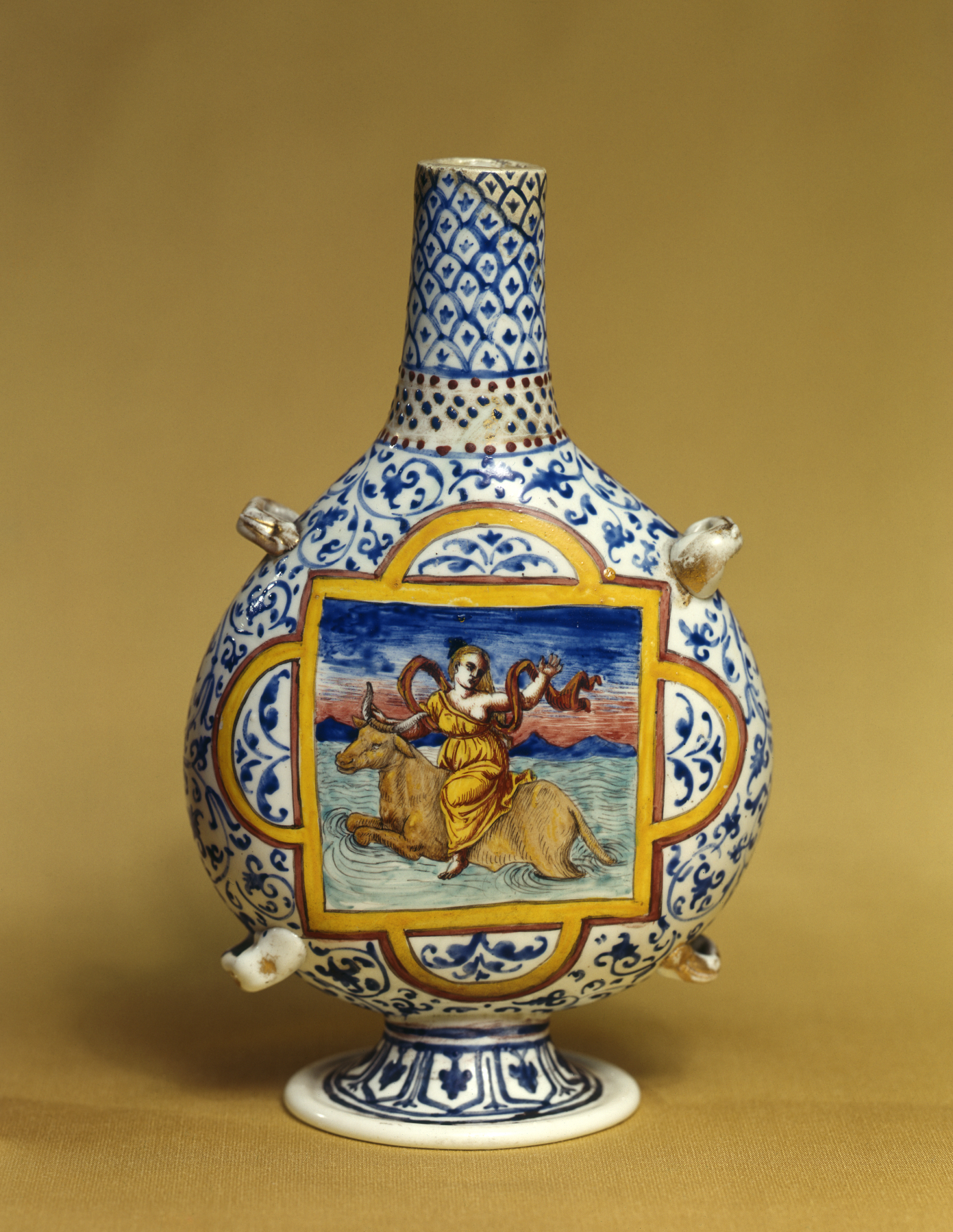Milk Glass Vase in the Shape of a Pilgrim's Flask
(Renaissance Europe )
Fine opaque white glass (milk glass, or in Italian, "lattimo") was developed in Venice to imitate the appearance of the delicate, translucent Persian and Chinese porcelain with blue and white designs that Europeans found so appealing and were unable to reproduce. Nevertheless, the results here, with the combination of blue and white design and a mythological scene (the abduction of the maiden Europa by the god Jupiter disguised as a bull) framed in yellow, is immediately imitative of Italian Renaissance maiolica (earthenware). The flask shape with attachments for carrying cords draws both on Roman glass flasks and the simple wooden flask used by pilgrims.
Provenance
Provenance (from the French provenir, 'to come from/forth') is the chronology of the ownership, custody, or location of a historical object. Learn more about provenance at the Walters.
Harding, New York; Henry Walters, Baltimore, 1916 [mode of acquisition unknown]; Walters Art Museum, 1931, by bequest.
Exhibitions
| 1982 | 3000 Years of Glass: Treasures from The Walters Art Gallery. The Walters Art Gallery, Baltimore. |
| 1971-1972 | World of Wonder. The Walters Art Gallery, Baltimore. |
Geographies
Italy, Venice (Place of Origin)
Measurements
6 3/8 in. (16.2 cm)
Credit Line
Acquired by Henry Walters, 1916
Location in Museum
Accession Number
In libraries, galleries, museums, and archives, an accession number is a unique identifier assigned to each object in the collection.
In libraries, galleries, museums, and archives, an accession number is a unique identifier assigned to each object in the collection.
47.30


